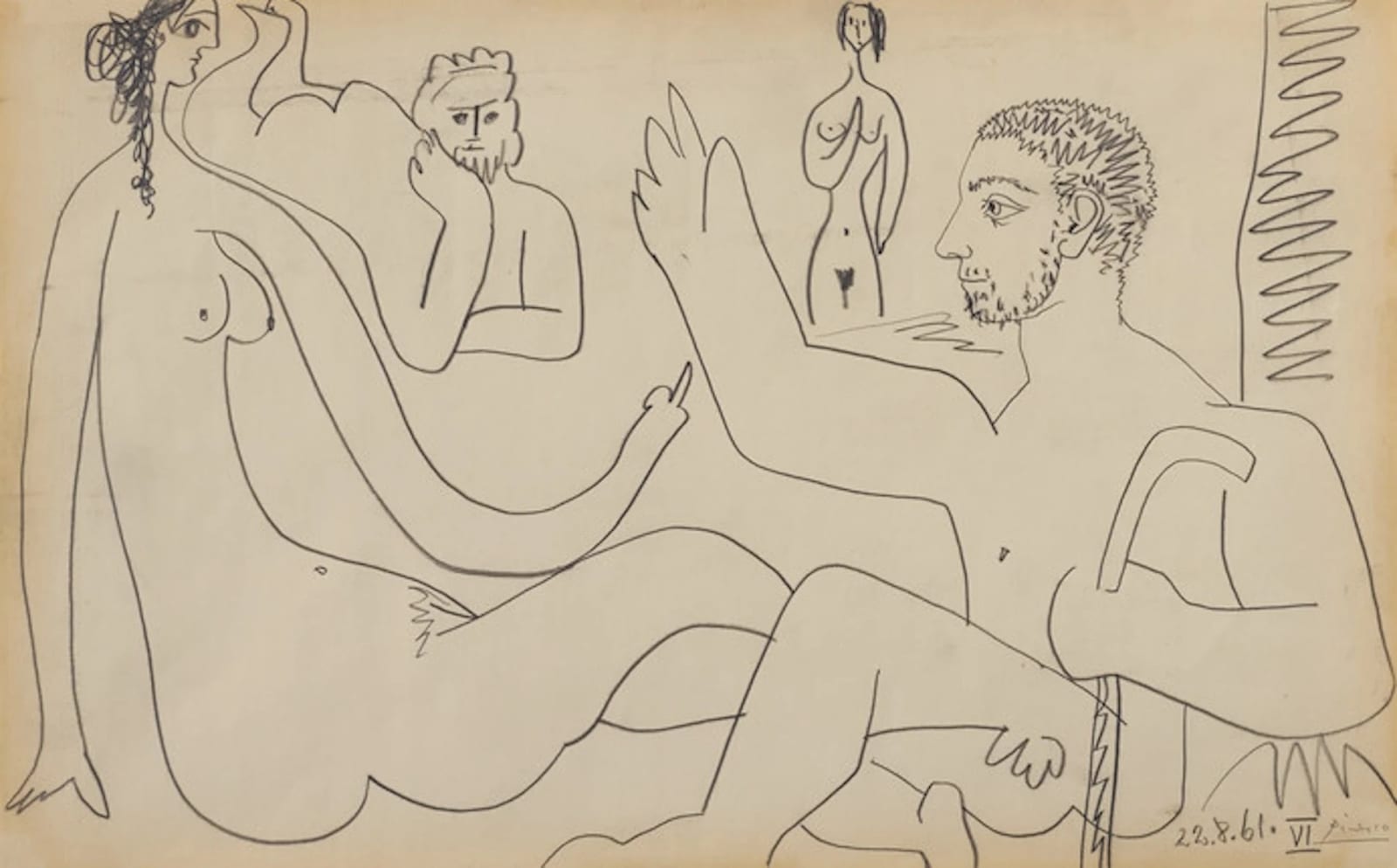Pablo Picasso 1881-1973
Les dejeuners, 1961
Graphite
10 5/8 x 16 1/2 in
Provenance
Private collection, United StatesChristie's, Paris, 28 November 2012, lot 45.
Christie's, London, 28 February 2019, lot 272
Bonhams 2021 (Pass)
Exhibitions
Picasso first saw Manet's Le déjeuner sur l'herbe at the 1900 Exposition Universelle in Paris. The work had an immediately profound impact on him, yet it was not until 1959 that he would embark on an exploration of his predecessor's 1863 iconic creation. Picasso's ceaseless reimaginings of Manet's composition would eventually come to encompass, as Susan Grace Galassi has noted, 'twenty-seven paintings in oil on canvas, some one hundred and fifty drawings, three linoleum cuts, eighteen cardboard maquettes for sculpture, five concrete sculptures, and several ceramic plaques' (S.G. Galassi, Picasso's Variations on the Masters, 1996, p. 185). With seemingly tireless energy and application, he would change the forms and even the narrative of the picture again and again. During the 1950s in particular, Picasso created a number of series of 'variations' based on the paintings of his predecessors:Las Meninas of his fellow Spaniard, Diego Velázquez, the Femmes d'Alger of Eugène Delacroix or, as here, Le déjeuner sur l'herbe by Manet. In these works, Picasso appeared to be challenging his artistic forefathers and squaring up to their legacies. At the same time, however, there was a certain gleeful irreverence in his dismantling and serial reconstruction of these iconic images for his own purposes. In the case of Le déjeuner sur l'herbe, the sense of iconoclasm is all the more pointed as the original work had itself been based on a predecessor, the Louvre's famous Concert champêtre previously attributed to Giorgione and now often ascribed to the hand of Titian. Manet's reimagining of this image of pastoral idyll was itself a cause of great scandal when it was first exhibited at the Salon des Refusés.
In reinterpreting this critical landmark in the birth of Modernism, Picasso rediscovered and merged many of his favourite themes: the artist and model, bathers on a beach, figures in an idyllic landscape, all highly charged with his distinctly modern and personal treatment of sexuality.
Literature
C. Zervos, Pablo Picasso, vol. XX, Œuvres de 1961 à 1962, Paris, 1968, no. 125 (illustrated pl. 66).Mailing list
* denotes required fields
We will process the personal data you have supplied in accordance with our privacy policy (available on request). You can unsubscribe or change your preferences at any time by clicking the link in our emails.
